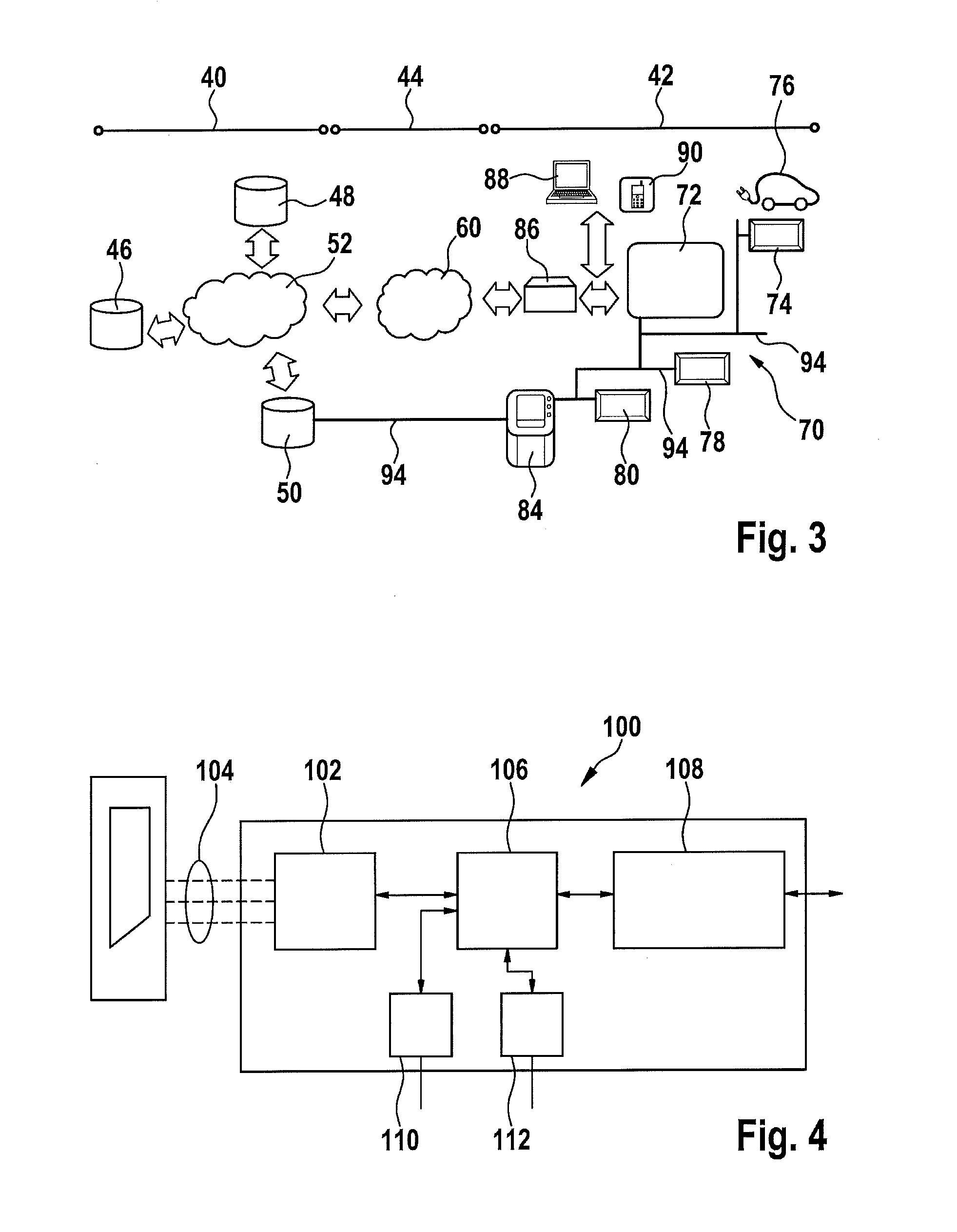Method for operating a local energy network
a local energy network and energy network technology, applied in non-electric variable control, process and machine control, instruments, etc., can solve the problems of increasing energy costs, high cost of charging devices, and unlikely use in private households, so as to avoid overloading of building connection technology, increase energy costs, and avoid overloading
- Summary
- Abstract
- Description
- Claims
- Application Information
AI Technical Summary
Benefits of technology
Problems solved by technology
Method used
Image
Examples
Embodiment Construction
[0027]The present invention is schematically shown on the basis of specific embodiments in the drawings, and is explained in detail below with reference to the drawings.
[0028]FIG. 1 shows an overload in a household connection. In the drawing, electrical power in kW is plotted on an ordinate 10. A threshold 12 is plotted at 30 kW; beyond this is an overload region 14 of the household connection. The drawing shows, for the year 2010, the power requirements and thus the energy requirements of the loads in the house, which in this case represents the local energy network. A first clock 16 indicates the power requirements of the household devices, and a second black 18 indicates the requirements for heating and air conditioning. The drawing shows that the power requirements in the house as a whole remain below threshold 12.
[0029]A corresponding division of the energy requirements is also plotted for the year 2025. Again, a first block 20 is shown for the requirements of the household dev...
PUM
 Login to View More
Login to View More Abstract
Description
Claims
Application Information
 Login to View More
Login to View More - R&D
- Intellectual Property
- Life Sciences
- Materials
- Tech Scout
- Unparalleled Data Quality
- Higher Quality Content
- 60% Fewer Hallucinations
Browse by: Latest US Patents, China's latest patents, Technical Efficacy Thesaurus, Application Domain, Technology Topic, Popular Technical Reports.
© 2025 PatSnap. All rights reserved.Legal|Privacy policy|Modern Slavery Act Transparency Statement|Sitemap|About US| Contact US: help@patsnap.com



